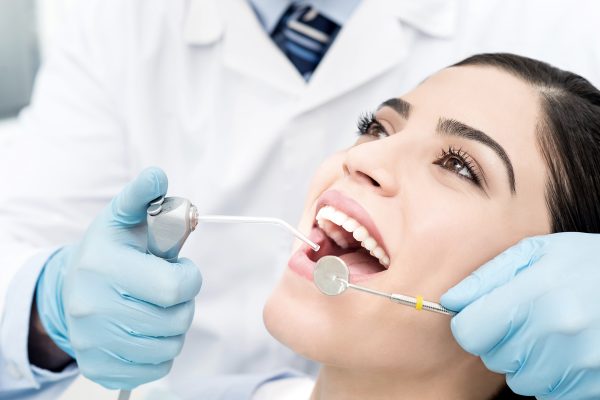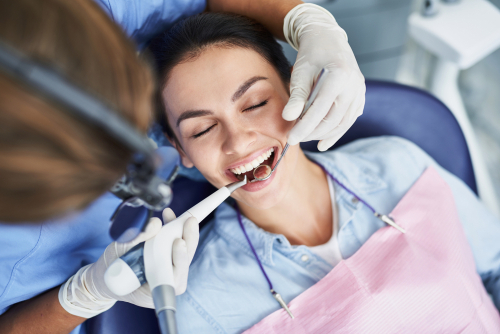Keep Your Smile Healthy with Professional Dental Cleanings in Tuckerton, NJ
 Visiting the dentist regularly for cleanings is one of the simplest and most effective ways to keep your teeth and gums healthy. At Tuckerton Dental, our Tuckerton, NJ dentist, Dr. Ronald Petrosky and his friendly team provide thorough, gentle dental cleanings that prevent common oral health issues before they become serious. Serving patients in Tuckerton, Little Egg Harbor, Manahawkin, Stafford Township, and surrounding Ocean County communities, our office is here to make routine dental care easy and comfortable.
Visiting the dentist regularly for cleanings is one of the simplest and most effective ways to keep your teeth and gums healthy. At Tuckerton Dental, our Tuckerton, NJ dentist, Dr. Ronald Petrosky and his friendly team provide thorough, gentle dental cleanings that prevent common oral health issues before they become serious. Serving patients in Tuckerton, Little Egg Harbor, Manahawkin, Stafford Township, and surrounding Ocean County communities, our office is here to make routine dental care easy and comfortable.
If you’re ready to schedule your next dental cleaning, contact our Tuckerton dental office by calling (609) 296-1007.
Confidence in Care at Tuckerton Dental
At Tuckerton Dental, we believe the best measure of our care comes directly from our patients. One of our valued patients, Frank B., has trusted Dr. Ronald Petrosky and our team with his dental health for years. He shared this about his experience:
- “My experience and extended work over the years with Tuckerton Dental have given me healthy teeth, coupled with a great smile. Dr. Petrosky is a gentle educated man on top of all the new dental advances and equipment. Dr. Petrosky and his lovely staff give me complete confidence that my teeth have a bright future.”
Frank’s words highlight what sets our office apart: compassionate care, a gentle touch, and the use of advanced dental technology to deliver excellent results. His long-term trust reflects the kind of patient relationships we strive to build—where you feel heard, respected, and confident that your smile is in the best hands.
What Are Professional Dental Cleanings?

Benefits of Routine Dental Cleanings
When you choose Tuckerton Dental for preventive care, you can expect benefits beyond just a clean smile:
- Early detection of oral health problems
- Reduced risk of gum disease and tooth decay
- Fresher breath and a brighter appearance
- Improved overall health through better oral hygiene
- Peace of mind knowing your dental health is in good hands
What Happens During a Dental Cleaning at Our Tuckerton Office?

- Oral Exam – Before the cleaning begins, your dentist or hygienist checks for signs of decay, gum disease, or other oral concerns.
- Plaque and Tartar Removal – Special tools are used to gently remove hardened tartar from your teeth, especially around the gum line.
- Professional Polishing – Your teeth are polished to remove surface stains and leave a smooth finish.
- Flossing and Rinsing – A thorough flossing ensures debris is removed, followed by rinsing to clear away particles.
- Fluoride Treatment (if needed) – Fluoride helps strengthen enamel and protect against cavities.
This process typically takes less than an hour but provides long-lasting benefits for your oral health.
How Often Should You Schedule Cleanings?
Most patients benefit from a cleaning every six months. However, if you have gum disease, frequent cavities, or wear braces, you may need more frequent visits. Dr. Petrosky will recommend a schedule tailored to your unique needs so you can enjoy the best long-term results. If it’s been more than six months since your last teeth cleaning, contact our Tuckerton dentist by calling (609) 296-1007 to schedule an appointment.
How to Maintain a Healthy Smile After a Dental Cleaning

- Brush twice a day with a fluoride toothpaste to remove plaque and strengthen enamel.
- Floss daily to clean between teeth where brushing alone cannot reach.
- Rinse with an antibacterial mouthwash to reduce bacteria and freshen breath.
- Limit sugary foods and drinks that feed cavity-causing bacteria.
- Drink plenty of water to wash away food particles and neutralize acids.
- Avoid tobacco products, which can stain teeth and increase the risk of gum disease.
- Keep up with regular checkups every six months, or as recommended by Dr. Ronald Petrosky.
By combining at-home care with routine visits to your preventive dentist in Tuckerton, you can enjoy a bright, healthy smile all year long.
Frequently Asked Questions
Most patients benefit from a cleaning every six months. However, if you have gum disease, frequent cavities, or other oral health concerns, Dr. Petrosky may recommend more frequent visits.
Cleanings are generally comfortable, but if you have sensitive gums or tartar buildup, you may experience minor discomfort. Our team uses gentle techniques to ensure your visit is as pleasant as possible.
While a cleaning is not the same as professional whitening, it can remove surface stains caused by coffee, tea, or tobacco. This often makes your smile appear brighter and fresher.
Delaying or skipping cleanings allows plaque and tartar to build up, increasing your risk of cavities, gum disease, and even tooth loss. Regular preventive visits protect your oral and overall health.
Schedule Your Teeth Cleaning with the Best Dentist in Tuckerton
Preventive care is the foundation of a healthy smile. At Tuckerton Dental, Dr. Ronald Petrosky is proud to serve patients in Tuckerton, Little Egg Harbor, Manahawkin, Stafford Township, and nearby Ocean County communities with gentle and thorough dental cleanings.
Take the next step toward a brighter, healthier smile. Call our Tuckerton dental office today by calling (609) 296-1007 to schedule your appointment with the best dentist near you in Tuckerton, NJ.